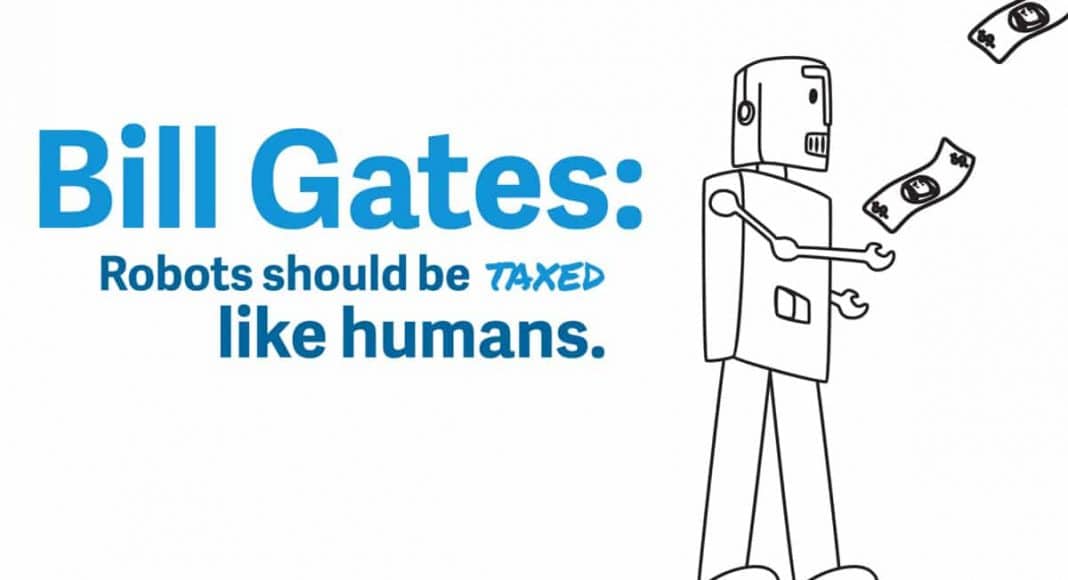Study suggests a robot levy -- but only a modest one -- could help combat the effects of automation on income inequality in the U.S.
Massachusetts Institute of Technology
 |
| Screenshot: Quartz via YouTube |
Now a study by MIT economists scrutinizes the existing evidence
and suggests the optimal policy in this situation would indeed include a tax on
robots, but only a modest one. The same applies to taxes on foreign trade that
would also reduce U.S. jobs, the research finds.
"Our finding suggests that taxes on either robots or imported goods should be pretty small," says Arnaud Costinot, an MIT economist, and co-author of a published paper detailing the findings. "Although robots have an effect on income inequality … they still lead to optimal taxes that are modest."
Specifically, the study finds that a tax on robots should range
from 1 percent to 3.7 percent of their value, while trade taxes would be from
0.03 percent to 0.11 percent, given current U.S. income taxes.
"We came in to this not knowing what would happen,"
says Iván Werning, an MIT economist and the other co-author of the study.
"We had all the potential ingredients for this to be a big tax, so that by
stopping technology or trade you would have less inequality, but … for now, we
find a tax in the one-digit range, and for trade, even smaller taxes."
The paper, "Robots, Trade, and Luddism: A Sufficient
Statistic Approach to Optimal Technology Regulation," appears in advance
online form in The Review of Economic Studies. Costinot is a
professor of economics and associate head of the MIT Department of Economics;
Werning is the department's Robert M. Solow Professor of Economics.
A sufficient statistic: Wages
A key to the study is that the scholars did not start with an a
priori idea about whether or not taxes on robots and trade were merited.
Rather, they applied a "sufficient statistic" approach, examining
empirical evidence on the subject.
For instance, one study by MIT economist Daron Acemoglu and
Boston University economist Pascual Restrepo found that in the U.S. from 1990
to 2007, adding one robot per 1,000 workers reduced the
employment-to-population ratio by about 0.2 percent; each robot added in manufacturing
replaced about 3.3 workers, while the increase in workplace robots lowered
wages about 0.4 percent.
In conducting their policy analysis, Costinot and Werning drew
upon that empirical study and others. They built a model to evaluate a few
different scenarios, and included levers like income taxes as other means of
addressing income inequality.
"We do have these other tools, though they're not perfect,
for dealing with inequality," Werning says. "We think it's incorrect
to discuss this taxes on robots and trade as if they are our only tools for
redistribution."
Still more specifically, the scholars used wage distribution data across all five income quintiles in the U.S. -- the top 20 percent, the next 20 percent, and so on -- to evaluate the need for robot and trade taxes.
Where empirical data indicates technology and trade have changed that wage distribution, the magnitude of that change helped produce the robot and trade tax estimates Costinot and Werning suggest.
This has the benefit of simplicity;
the overall wage numbers help the economists avoid making a model with too many
assumptions about, say, the exact role automation might play in a workplace.
"I think where we are methodologically breaking ground,
we're able to make that connection between wages and taxes without making
super-particular assumptions about technology and about the way production
works," Werning says. "It's all encoded in that distributional
effect. We're asking a lot from that empirical work. But we're not making assumptions
we cannot test about the rest of the economy."
Costinot adds: "If you are at peace with some high-level
assumptions about the way markets operate, we can tell you that the only
objects of interest driving the optimal policy on robots or Chinese goods
should be these responses of wages across quantiles of the income distribution,
which, luckily for us, people have tried to estimate."
Beyond robots, an approach for climate and more
Apart from its bottom-line tax numbers, the study contains some
additional conclusions about technology and income trends. Perhaps
counterintuitively, the research concludes that after many more robots are
added to the economy, the impact that each additional robot has on wages may
actually decline. At a future point, robot taxes could then be reduced even
further.
"You could have a situation where we deeply care about
redistribution, we have more robots, we have more trade, but taxes are actually
going down," Costinot says. If the economy is relatively saturated with
robots, he adds, "That marginal robot you are getting in the economy
matters less and less for inequality."
The study's approach could also be applied to subjects besides automation and trade. There is increasing empirical work on, for instance, the impact of climate change on income inequality, as well as similar studies about how migration, education, and other things affect wages.
Given the increasing
empirical data in those fields, the kind of modeling Costinot and Werning
perform in this paper could be applied to determine, say, the right level for
carbon taxes, if the goal is to sustain a reasonable income distribution.
"There are a lot of other applications," Werning says.
"There is a similar logic to those issues, where this methodology would
carry through." That suggests several other future avenues of research
related to the current paper.
In the meantime, for people who have envisioned a steep tax on robots, however, they are "qualitatively right, but quantitatively off," Werning concludes.